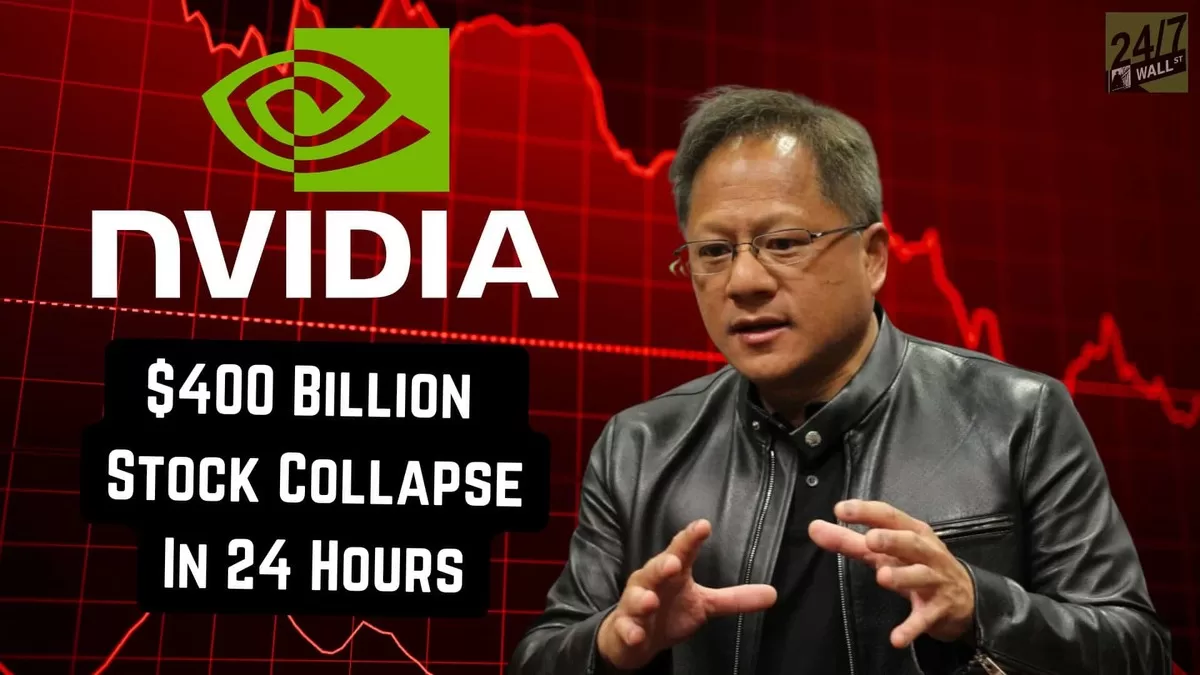NVIDIA’s Stock Price Plunges: What Caused NVIDIA’s $400 Billion Sell-Off – 24/7 Wall St
NVIDIA’s stock experienced a dramatic plunge, losing over $400 billion in market capitalization between Thursday and Friday. On Thursday, NVIDIA (Nasdaq: NVDA) reached a high of $140.76 per share, but by Friday, the share price had plummeted to $124.30. This swift drop raised questions among investors and analysts alike about the factors behind this massive sell-off.
A Dramatic Plunge in NVIDIA’s Stock Price
The tech giant saw its market value erode by $277 billion just from Thursday morning to the market close. This loss surpassed the total value of major companies like Qualcomm, Salesforce, Adobe, Pepsi, T-Mobile, and Wells Fargo in just a few hours. The downward trend continued on Friday morning, pushing the total market value loss to over $400 billion.
The rapid descent in NVIDIA’s stock price is particularly surprising given the company’s meteoric rise over the past month. Prior to its earnings announcement on May 22nd, NVIDIA’s stock was trading at $94.94 per share. By Thursday, it had surged nearly 50% in a month, marking an unprecedented run for a company of its size.
Unprecedented Trading Volumes
Signs of a potential bubble were apparent before the sell-off. On Wednesday, despite markets being closed, NVIDIA’s stock jumped 4% in overseas trading. Additionally, the company’s trading volume on Thursday was historic, with figures like 230 times higher than Netflix, 9 times higher than Tesla, 7 times higher than Apple, 36 times higher than Microsoft, 35 times higher than Google, 14 times higher than Amazon, and 60 times higher than Facebook. These numbers underscore the frenzied trading activity surrounding NVIDIA.
AI Enthusiasm and Market Sentiment
One of the driving forces behind NVIDIA’s stock surge was the booming enthusiasm around artificial intelligence (AI). Investors were betting heavily on NVIDIA due to its significant role in AI hardware and software. However, such rapid gains often lead to corrections, and the recent drop could be a reflection of the market adjusting from over-enthusiastic valuations.
Despite the massive sell-off, analysts like Austin Smith and Eric Bleeker from 24/7 Wall Street believe it’s not time for investors to panic. They argue that fluctuations are normal and healthy in the stock market. The primary risk for NVIDIA, a potential decrease in AI hardware spending, remains unchanged in the near future.
Future Prospects and Recommendations
Looking ahead, analysts remain optimistic about NVIDIA’s prospects. Several articles on 24/7 Wall Street have presented data-driven reasons suggesting NVIDIA could reach $150 per share by the end of summer. If the company maintains a consistent forward price-to-earnings (P/E) ratio comparable to its industry peers, it is likely to achieve this target.
In light of the sell-off, investors are advised to consider high-quality names in the AI sector, such as Broadcom (Nasdaq: AVGO), which offers alternatives in AI networking and processing. Other potential investments include infrastructure plays like ASML (Nasdaq: ASML) or Lam Research (Nasdaq: LCRX), which are positioned to benefit from the growth of AI.
In conclusion, while NVIDIA’s stock has faced a significant setback, this appears to be more a case of market momentum shifting rather than any fundamental issues with the company. Investors are encouraged to stay informed and consider the broader context of the AI industry when making investment decisions.
#NVIDIA #StockMarket #AI #Investing #TechNews
